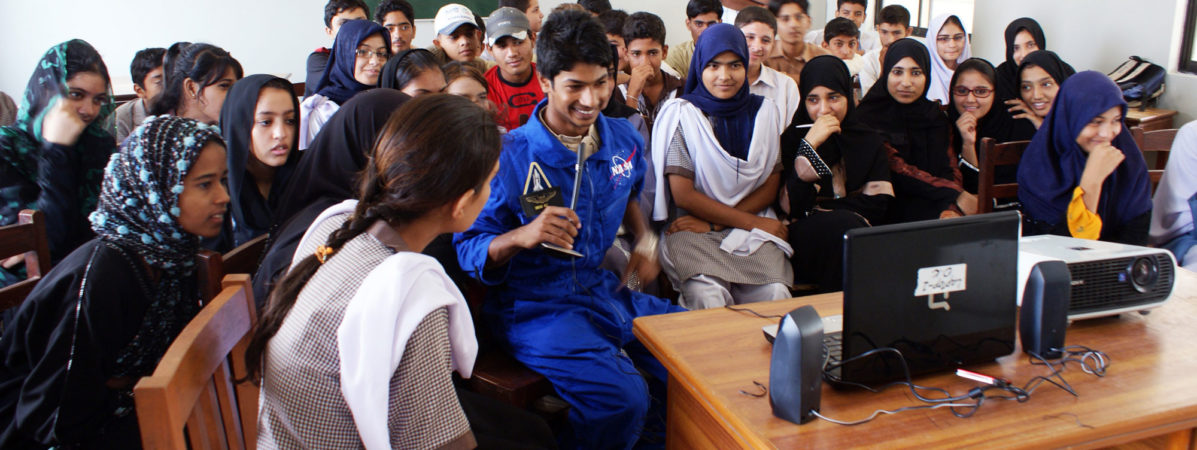
Let’s add one more item to the above list: international education is for everyone. This idea was the chosen theme for this year’s International Education Week by the U.S. Departments of State and Education, and it resonates deeply with our work at Digital Promise. In a connected world, everyone can have access to meaningful experiences with global peers that challenge their assumptions and build their capacities to collaborate and learn effectively across cultural borders.
International, or global, education can take many forms. One of the most powerful is exchange: relationships built among people from different cultures in a common environment. Technology and digital media open the possibility for that common environment to be virtual. A virtual exchange may initiate or sustain a relationship formed in person. It may also encourage an individual to pursue a travel or study abroad experience when they had never before considered it.
The bottom line is that as an increasingly globalized world requires every student to develop more complex skills to confidently navigate cross-cultural relationships and value diversity, we must ask ourselves: How can technology connect students across cultures and borders to help them develop critical global competence skills?
Applicants to the 2014 Digital Innovation in Learning Awards in the “Busting Boundaries” category asked themselves this very question, and their submitted videos serve as striking responses.
As an example, take Kris Hupp, the winner of the Busting Boundaries award from Cornell School District in Pittsburgh, Pa. In his video, Kris showed how he developed a program to engage his students with others around the world in sustained, deep dialogues about contemporary world issues.
From Kris’ video and the four honorable mentions in this category, four trends emerge:
Donna Román’s Illinois classroom worked with a class in Ireland to research Francis O’Neill from Cork County, Ireland, who immigrated to the United States and eventually became the police chief in Chicago. The two classrooms’ proximities to the places where O’Neill lived provided the local connection from which they extended their research and explored questions about what makes a meaningful life. Students are more engaged learners when their projects matter to them, and the exchange deepens when those students’ different perspectives contribute to a richer discussion and reflection on the common area of interest.
Kris Hupp’s video ends with a student testimonial that is a powerful example of an emerging global consciousness and motivation to make a difference. Kris’ work helped his students move almost effortlessly from passive conversation and knowledge exchange into action. Issues of common interest inspire students to take action in their local communities and connect those actions globally.
Karen Stadler, a teacher in South Africa, perhaps did not expect that when she introduced her classroom to the topic of endangered rhinos in their region, the project would grow to engage classrooms around the world. Karen’s work is another inspiring example of a relevant topic spurring students to local and global action.
Scott Bedley’s classroom became famous for two seconds during Microsoft’s 2014 Super Bowl ad, where they were featured enthusiastically screaming hello to peers in Mexico City during a session of “Mystery Skype.” Digging deeper into Scott’s project reveals that beyond just talking with classrooms, his students are actually project managers in collaborative work realized across borders. If we expect our students to be active in solving global issues throughout their lives, we need to make them drivers of their own work from the beginning.
Margaret Powers used multiple devices and formats to help her students — as young as Pre-K — to share their lives with peers in other U.S. states as well as in Ethiopia, Brazil, and Singapore. Margaret’s video shows us how she has made global connections a priority in her classroom, recognizing that like reading, math, and languages, mindsets like empathy and respect for diversity are best developed early and built upon frequently.
https://youtu.be/xFRtzOV0ehI
Have you experienced a virtual exchange? Share your stories with us below in the comments.